Phylum Chordata Rank Species | Family Cuculidae Higher classification Chrysococcyx Order Cuculiformes | |
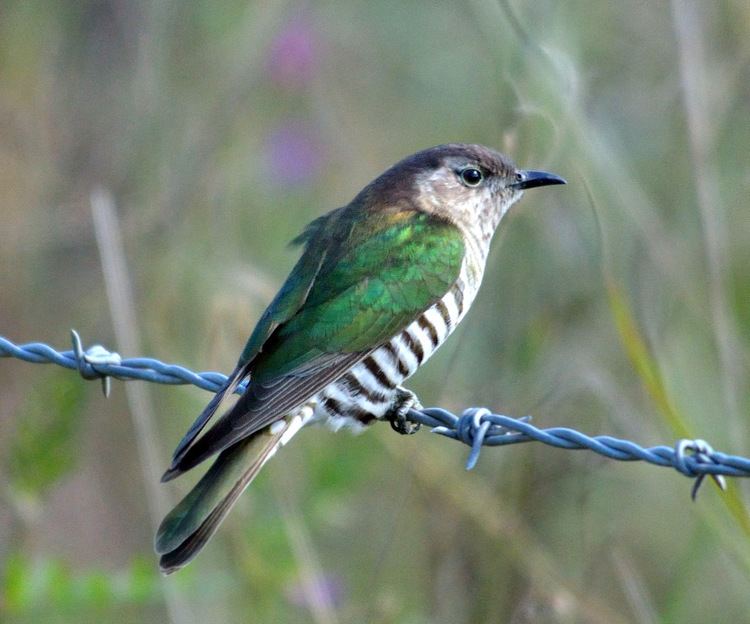 | ||
Similar Horsfield's bronze cuckoo, Fan‑tailed cuckoo, Chrysococcyx, Little bronze cuckoo, Pallid cuckoo | ||
Shining bronze cuckoo bird watching in australia with ej birdwatching
The shining bronze-cuckoo (Chrysococcyx lucidus) is a species of cuckoo in the family Cuculidae, found in Australia, Indonesia, New Caledonia, New Zealand, Papua New Guinea, Solomon Islands, and Vanuatu. It was previously also known as Chalcites lucidus.
Contents
- Shining bronze cuckoo bird watching in australia with ej birdwatching
- Mvi 6555 shining bronze cuckoo
- Taxonomy
- Description
- Distribution and habitat
- Behaviour
- References

It is the world’s smallest cuckoo, being only 15 to 17 centimetres (5.9 to 6.7 in) in length, and parasitises chiefly dome-shaped nests of various Gerygone species, having a range that largely corresponds with the distribution of that genus. It may also parasitise other Acanthizidae species, and is also the most southerly ranging brood parasitic bird species in the world, extending to 45°S in New Zealand.
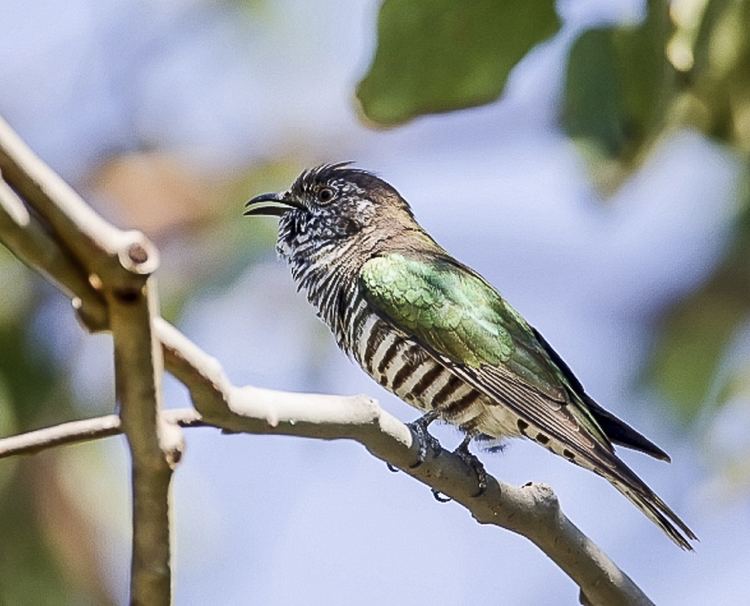
Mvi 6555 shining bronze cuckoo
Taxonomy
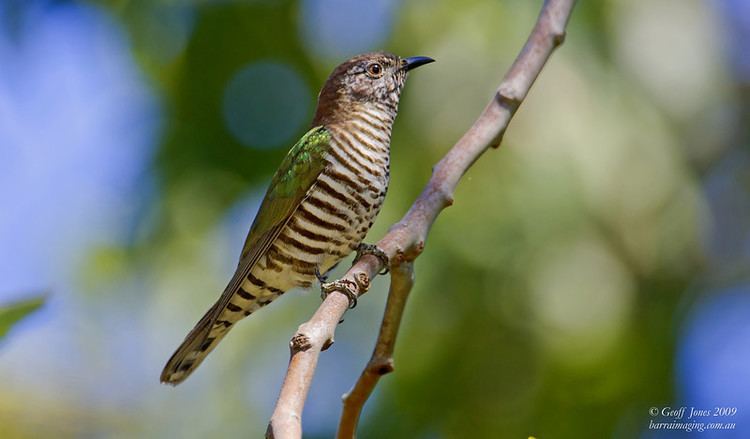
The German naturalist Johann Friedrich Gmelin described the shining bronze-cuckoo in 1788 as Cuculus lucidus, from a specimen collected from Queen Charlotte Sound in New Zealand. John Latham described the golden bronze-cuckoo as Cuculus plagosus from New South Wales in 1801, and the two were classified as separate species for many years. However the two are now considered conspecific. Common names in New Zealand include pipiwharauroa and whistler.
Description

Hard to spot and easier to hear, the shining bronze-cuckoo has metallic golden or coppery green upperparts and white cheeks and underparts barred with dark green. The female is similar with a more purplish sheen to the crown and nape and bronzer-tinged barring on the belly. The bill is black and the feet are black with yellow undersides.
Distribution and habitat
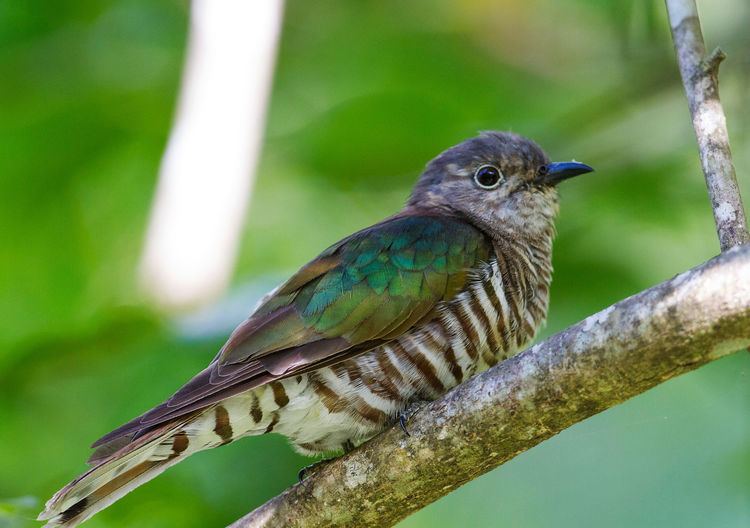
The shining bronze-cuckoo is a summer visitor to Eastern Australia from the Cape York Peninsula in Queensland to South Australia's Eyre Peninsula and Kangaroo Island and Tasmania, as well as Western Australia from Carnarvon in the north to the southwest and east to Esperance. These winter in the Lessa Sunda Islands and New Guinea. New Zealand populations winter in the Solomon Islands and arrive in New Zealand from mid August, though they are not common until October. They spread out to Stewart and Chatham Islands and are found to an altitude of 4000 ft.
Behaviour
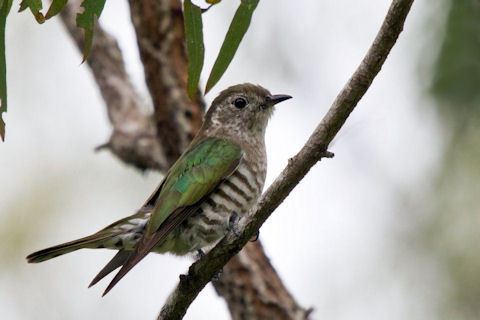
Insectivorous, the shining bronze-cuckoo eats insects that are avoided by other birds, such as caterpillars, particularly those of the magpie moth, and beetles, particularly ladybirds. The shining bronze cuckoo's gizzard is lined with a soft thick lining which catches the caterpillar spines; these fall away and are spat out by the bird.
A female shining bronze-cuckoo lays a single egg in a host nest and removes a host egg. After hatching, the baby cuckoo ejects the host nestlings from the nest. The grey gerygone is a common host species in New Zealand, the shining bronze-cuckoos missing the first but parasitising heavily the second broods of the season (55% of nests in a study in Kaikoura). The Chatham gerygone is a host species in the Chatham Islands. The matte eggs laid are olive brown in Western Australia and various shades of green or greenish white to olive to dark brown elsewhere, and do not resemble the eggs of their host. The dark pigment rubs off easily. The eggs are often dark coloured in thornbill and gerygone nests, whose eggs are likewise domed and dark. This is thought to minimise the risk of ejection by a second female cuckoo visitor to the already parasitised nest, which might overlook a dark egg when laying another egg.
Several other species are occasional hosts. In Victoria in 2005, a pair of chestnut-rumped heathwren was encountered with a juvenile shining bronze-cuckoo which imitated the alarm call of a baby heathwren. The introduced house sparrow and song thrush have been recorded as hosts in New Zealand.
The shining bronze-cuckoo falls prey to cats. It has been recorded as dying after flying into windows.
